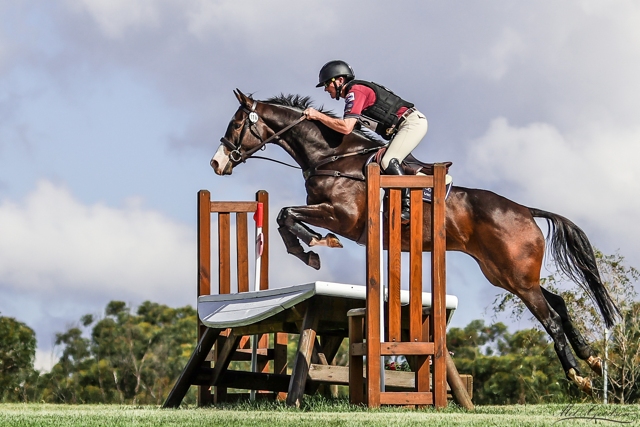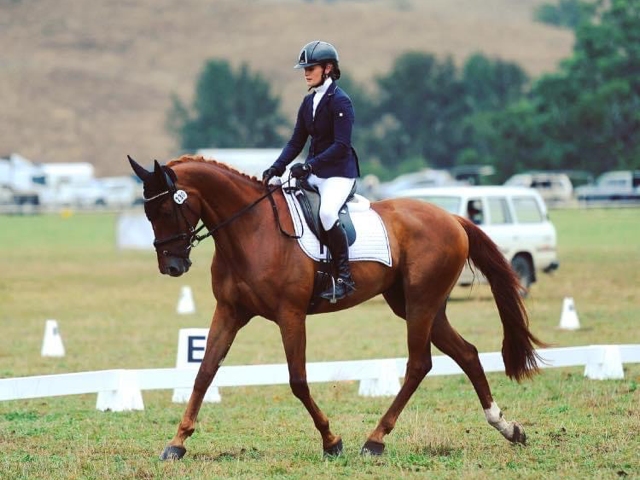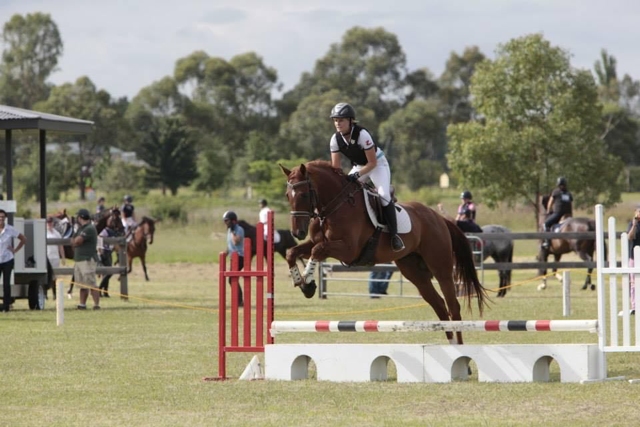Getting started in eventing
With leading Australian coach and 5* winner Craig Barrett. Article by Alison Duthie

Know your sport
The sport of eventing can be a tricky path to navigate especially if you don’t have anyone to guide you on your way. In this first article, with international event rider and leading Australian coach Craig Barrett, we look at how the sport of eventing runs, point you in the direction of some rules and regulations and give you some helpful hints when it comes to getting to your first event.
What is eventing?
Eventing is a sport comprising of three phases, dressage, cross country and show jumping. Depending on the level and type of event you are entering the cross-country phase may take place before the show jumping or vice versa but you will always do your dressage phase first. Depending on the country you live in an event will take place over two days or all three phases may run on one day.
Dressage

In the dressage phase you will be required to ride a set test, with each test having a maximum possible score, dependant on the level you are riding. Each movement in the test will be scored by a judge (or judges) with marks ranging from 0-10. Those marks are then added together and deducted from the maximum possible score, giving you a penalty score. That penalty score is converted into a percentage. For example, if the maximum score in a dressage test is 200 and you score 155. You take 155 ÷ 200 x 100 = 77.5%. This is the percentage of good points scored. Your penalty score is then determined by subtracting your good percentage score from 100 (100 – 77.5 = 22.5). Your dressage penalty score (the one that you will carry forward) is 22.5. And you thought eventing was all about riding!
Cross country

This phase consists of jumping a course of fixed ‘natural type’ fences including various obstacles like water, ditches, walls, drops and combinations. The number of jumps will depend on the level you are competing at but could be anywhere from 20-40. There is an optimum time to complete the course and that time will again depend on the level of competition, and there is a set speed for each level. If the rider exceeds the optimum time, penalties are incurred. However, it is important to remember that when you are starting out in eventing ‘making the time’ isn’t the most important thing – but we’ll discuss that later. Penalties are also incurred for any refusals or run outs and you are eliminated if you fall off.
Show jumping

This phase consists of 12-20 brightly coloured fences that must be jumped in a specific order. Unlike cross country, these fences can be knocked down. Just like cross country there is an optimum time, and penalties will be occurred for going over that time, for refusals and for knocking down rails. If you fall off, you are eliminated from the competition.
At the end of the event all the penalty scores are added together and the lowest score wins.
As with any sport it is vital to know the current rules and regulations. Google 'eventing rules' for your country.
How do you know if you are ready to go to your first event?
Picture the scene – you’ve set up fences in the paddock – you’ve measured them at 60cm and you can jump them all. Surely that’s all you need to be able to do to ride at an event … maybe not. Riding and jumping fences at home is very different to riding your horse out in the open at an event where there could lots of things happening, not least of which might be hundreds of other horses going in all different directions. That is why it’s so important to put some measures in place to ensure you are very well prepared before you head off to your first event.
Although there are no rules to say you must have had a lesson, or received some advice from an experienced coach, before you go to your first event it is certainly a good idea to do just that. It’s all about being safe and making your eventing as safe as possible for both your horse and yourself.
It is all too common to see riders at the lower levels winging round the cross-country course with their saddles slipping, simply because no one has told them about the importance of checking your girth before you leave the start box and wearing a well fitted breastplate.
Let’s look at a few things you should put in place to keep yourself safe
Ask an experienced rider or your coach to check your tack/gear making sure that everything fits and does the job it is meant to do.
Don’t suddenly get new gear/tack to go off to your first event. Make sure you have used it all at home prior to your first event to ensure it stays in place, doesn’t pinch, move or cause any other issues.
Ride your horse out in the open before you go to your first event. Ideally go to clinic where there a few other horses around and that way you will get an idea of how your horse is going to react in an event situation. He may get very excited, and you will need strategies in place to deal with that, which is where a coach again can help.

Before setting off to your first event you should feel confident in being able control your horse in all paces as well as being able to steer him in the direction you want to go. This may sound basic, but a lot of good instruction is based on the basics!
Think about the pace you will ride your cross-country round. It’s okay to trot out of the start box and trot to the first fence. The most important thing is that you can get to each fence safely and in control.
Make sure you are fit enough to compete. We will talk about fitness for both yourself and your horses in more detail in another article but for now don’t be fooled into thinking that as long as you are fit enough to canter for five minutes you will be fine. All it takes is for something to go wrong on the cross country course, where you have a refusal, or your horse gets strong and can suddenly find yourself out there for a lot longer than you thought. Be fitter than you think you need to be.
The same goes for your horse when it comes to fitness. At the lower level your horse must have a base of fitness so he can cope with what he is being asked to do. But more about that in our fitness article.
Craig Barrett is an Australian International 5* winner with over 25 years experience in competing and coaching at the highest level in eventing. Together with his wife Prue they run a boutique breeding facility at their property Sandhills in Branxton, NSW Australia. Read more about Sandhills at http://www.sandhills.com.au/ or follow teamsandhills on Facebook and Instagram.
Images supplied by Amy Roberts, Molly Peters & Snapshot Australia
Three ways CrossCountry App can help you get started with eventing
Search for events near you and look at past courses so you know what to expect on the cross country course
Listen to a guided course walk for tips on how to ride a cross country course. This one by Sandy Lucas at Sydney International Equestrian centre is a great one
Review the course before you ride, memorise the route and your riding plan. Many events publish an interactive, digital course map on CrossCountry app. You can even add notes on each jump. If the event has not published the maps, you can record your own map with GPS using CrossCountry app.
Download CrossCountry App